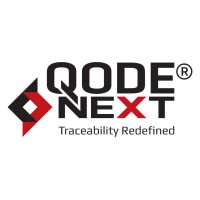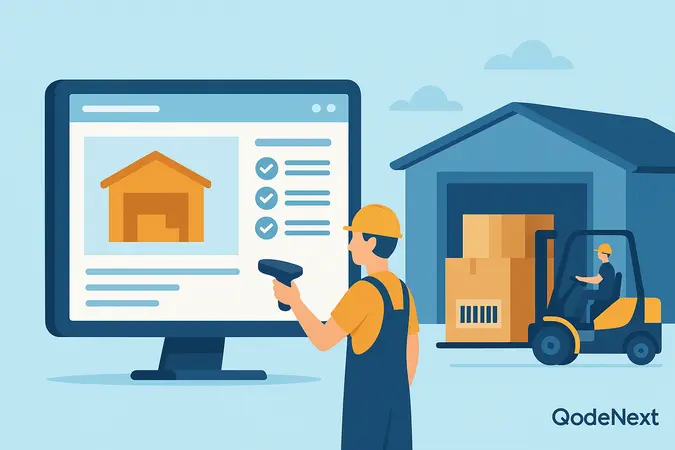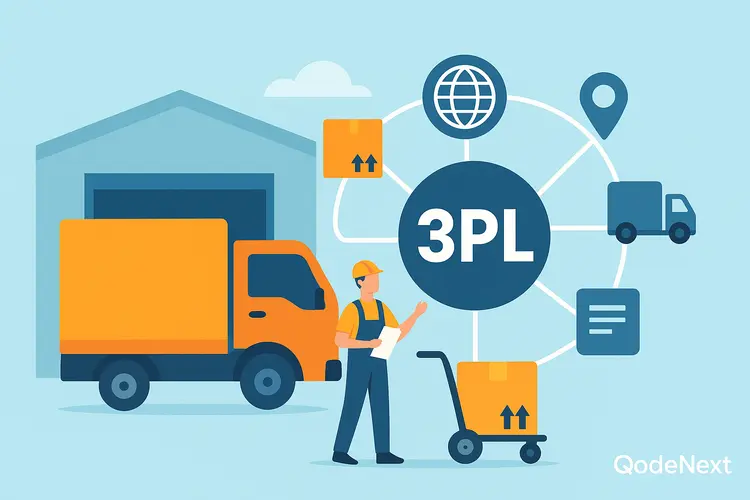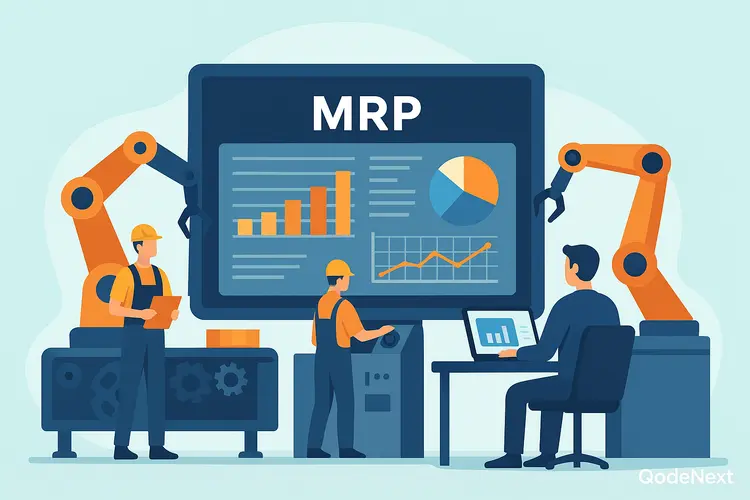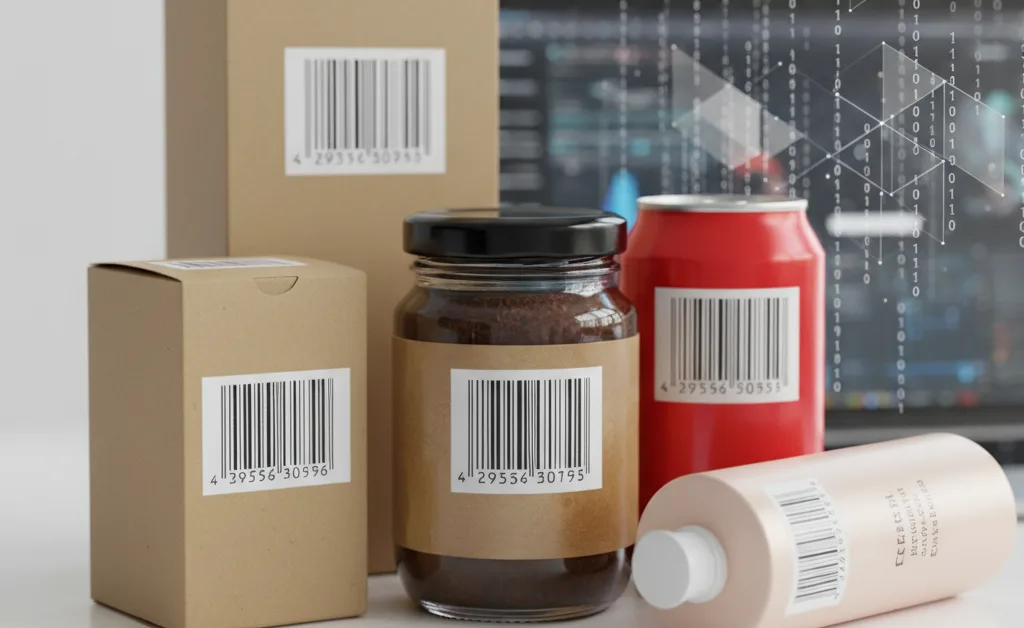
The barcode and the point-of-sale system have a quiet dialogue each time a cashier scans a product. That recognisable beep is evidence that the product’s identity has been identified, confirmed, and recorded in a split second.
The EAN-13 barcode, one of the most popular barcode standards worldwide, is responsible for that moment.
Knowing the EAN-13 barcode format is crucial whether you’re a manufacturer, retailer, or someone who wants to learn more about how barcodes function—especially if you’re just starting to explore what is EAN and how it fits into global product labeling. We’ll dissect it in this guide, covering everything from structure and checksum to the unseen “quiet zones” that contribute to each successful scan.
Let’s begin with the basics: what is EAN and why is it the basis for international retail barcoding?
Why EAN Is Important and What It Is
Here’s the easiest way to learn EAN if you’ve ever wondered what it is:
European Article Number, or EAN, is a global standard that is overseen by GS1, the global body that regulates barcode numbering systems.
To standardise product identification between nations, the EAN system was created. Although it was initially created for Europe, it is now utilised by practically all of the world’s largest manufacturers, retailers, and logistical networks.
The most widely used type of barcode, EAN-13, encodes a 13-digit number that allows a product to be uniquely identified anywhere in the world. This standard follows a defined EAN-13 barcode format, ensuring each product has a consistent identity across all markets. This implies that, regardless of where they were made, a chocolate bar in Paris and one in Delhi can be scanned in the same system and identified right away.
What does EAN mean in commercial terms, then?
In the worldwide supply chain, it serves as your product’s passport.
Deconstructing the EAN-13 Barcode
There are precisely 13 digits in the EAN-13 barcode system, and each one has a distinct meaning. Despite its apparent simplicity, each component contributes to error detection, traceability, and identification.
The number is organised as follows:
| Section | Digits | Description |
| Country Code | 2–3 digits | Identifies the country where the manufacturer is registered (not necessarily where the product was made). |
| Manufacturer Code | 4–5 digits | Unique code assigned to the company by GS1 |
| Product Code | 5 digits | Assigned by the company to identify a specific item or SKU. |
| Check Digit | 1 digit | Calculated automatically — ensures the code is error-free. |
For instance,
8901234567894
Here,
890 → India as the country
Manufacturer code: 12345
6789 → Product number
4 → Verify the number
Because of its structure, each EAN-13 barcode is distinct, acting as a digital fingerprint for your goods.
The Checksum’s (Check Digit) Function
The EAN-13 barcode’s final digit is a checksum that is mathematically determined to guarantee the barcode’s validity; it is not a random number.
This is the simplified version of how it operates:
- Multiply alternating numbers by three, beginning on the right.
- Add up all of the numbers.
- Determine the higher multiple of 10 that is closest.
- Your tick digit is the amount that is subtracted from that multiple.
This one digit helps computers quickly identify whether a barcode was entered or printed incorrectly and avoids scanning problems.
It’s among the little elements that contribute to the global dependability of the EAN 13 barcode format.
Silent Areas: The Unseen Heroes
Any EAN 13 barcode will include blank spaces before and after the lines if you examine it attentively. These regions are called silent zones and they are just as important as the actual bars themselves.
The silent zone is the empty, unprinted area that tells the scanner, “start here, stop here.” Without it, the reader could be fooled into thinking that the text or background graphics are part of the barcode.
A quiet zone of at least 2.31 mm must be left on all sides according to the specification, which corresponds to ten times the width of the narrowest bar.
So when designing labels or packaging, don’t fill these spaces with text, colours or logos. Still it’s one of the most common (and avoidable) mistakes when it comes to printing barcodes.
How Do EAN-13 and UPC Differ From One Another?
The UPC-A barcode, which is used in North America, is sometimes mistaken for the Ean 13 barcode. The distinction between UPC and EAN is minor but significant:
| Feature | EAN-13 | UPC-A |
| Digits | 13 | 12 |
| Geographical Use | Global | U.S. and Canada |
| Compatibility | EAN can read UPC codes | UPC readers can also read EAN (with minor adjustments) |
| Prefix | Country-based | Manufacturer-based |
In essence, EAN-13 represents UPC’s global evolution. The majority of contemporary systems allow both to be used interchangeably, although the ean 13 barcode is the safer option if you intend to sell abroad.
How an EAN-13 Barcode Is Generated
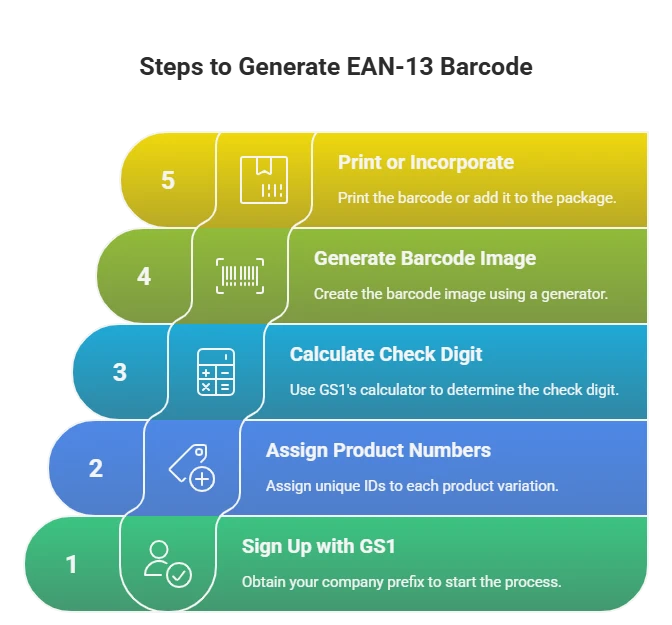
The typical procedure for creating a product’s barcode in EAN format is as follows:
- Sign up with GS1: Obtain your own company prefix.
- Assign Product Numbers: A distinct ID is assigned to every SKU or variation.
- Utilise GS1’s online calculator or program to determine the cheque digit.
- Make the barcode image using an EAN-13 barcode generator — a reliable tool that automatically applies the correct EAN-13 barcode format and check digit rules.
- Use the Proper Font and Size: Print it out or incorporate it into the package.
Numerous trustworthy ean 13 barcode generator tools are available online that produce flawlessly structured codes; many of them are even GS1-approved.
Before printing on a large scale, make sure to check the outcome online with a barcode scanner.
Selecting the Proper Font for EAN-13 Barcodes
The next step is to print your barcode digits and generator output accurately using the right EAN-13 barcode font — a special typeface that ensures scanners read your code correctly. The EAN 13 barcode typeface is useful in this situation.
The spacing, scaling, and readability of the bars by scanners are guaranteed by a barcode typeface. fonts such as GS1-128 or EAN-13.TTF.Design and packaging programs like Adobe Illustrator, CorelDRAW, and BarTender frequently employ TTF.
Advice for accurate printing:
- A minimum width of 37.29 mm and a minimum height of 25.93 mm should be maintained.
- Don’t let any text or colour spill into calm areas.
- For optimal readability, use black bars on a white background.
- Before completing, check the printed result using a barcode scanner, either online or in person.
Your barcode can be scanned by handheld devices and supermarket POS counters when it is printed appropriately.
Reliable EAN-13 Barcode Generator Tools
Only a small percentage of the hundreds of tools available online adhere to GS1 standards. A good ean 13 barcode generator should include the following features:
| Feature | Why It Matters |
| GS1 Compliance | Ensures barcodes meet global standards. |
| Automatic Check Digit Calculation | Avoids manual math errors. |
| Multiple Output Formats | Generates PNG, EPS, and PDF for packaging |
| Batch Creation | Useful if you need hundreds of codes. |
| Custom Fonts Included | Helps in consistent label printing. |
Online Labels, BarTender’s trial software, and GS1’s official tools are all well-known generators.
Free generators that guarantee “instant barcodes” without GS1 verification should be avoided as they might not be suitable for scanning at retail locations.
EAN-13 Barcode Printing and Testing
Errors in printing can render the code unreadable even if the EAN 13 barcode format is proper. Always test your design before going into large production:
- On the real packing material, print a sample.
- Verify scan readability online or with a barcode verifier.
- Examine contrast and calm areas.
- Steer clear of reflecting or curved surfaces as they can cause the bars to distort.
A barcode scanner online check is frequently used in modern packaging for immediate certification. This guarantees that your printed code will scan properly on websites like Amazon, Flipkart, and retail point-of-sale systems.
Real-World Example: How Well-Known Brands Do It
Let’s use Nestlé as an illustration. The EAN 13 barcode is used on all chocolate bars and coffee jars sold under its name, ensuring traceability and compliance with international barcode standards.
Nestlé gives each SKU a product number, registers its GS1 prefix, and prints the barcode uniformly in all markets. The barcode is standardised, guaranteeing worldwide traceability even in the event that product packaging or branding changes.
The ean 13 barcode format’s stability allows for millions of transactions per day, everywhere in the world.
Common Errors to Steer Clear of
When putting EAN 13 barcode labels into practice, even seasoned companies make mistakes. A few things to avoid are as follows:
- A wrong checkdigit results in invalid scans.
- Distorted Dimensions: Readability is broken by stretching or contracting.
- Missing Quiet Zones: Leads to POS system misreads.
- Using the Wrong Font: Bar width is distorted by non-compliant fonts.
- Unverified Codes: Prior to distribution, always verify barcodes.
Costly disruptions, such as lost retail listings or rejected shipments, might result from a simple print or spacing problem.
Why the EAN-13 Standard Remains the Most Popular
The EAN 13 barcode is still the foundation of international retail, even with the introduction of QR codes and RFID tags. Why?
Since it’s:
- Simple: Uses 13 numbers to encode important data.
- All POS and logistical systems are compatible.
- Economical: No costly hardware or software is required.
- Reliable: Even on simple devices, it scans instantly.
The Ean 13 barcode format is essential for companies of all sizes due to its dependability, widespread acceptability, and affordability.
Conclusion
Remember that the identification, price, and legitimacy of your product are all carried by that small pattern of black lines the next time you hear a barcode beep at the register. Knowing the EAN 13 barcode is important for anyone who is serious about selling goods professionally and internationally, not just tech specialists. Every little detail, from silent zones to checksum numbers, guarantees that your product will work flawlessly with retail systems worldwide.
Therefore, keep in mind that accuracy is crucial whether you’re learning about EAN, playing with an ean 13 barcode generator, or building up packaging with an ean 13 barcode font. Because in the retail industry, a single barcode scan can link your goods to billions of buyers.
FAQs: The Complete Guide to EAN-13 Barcode Format & Generation
1. What is the purpose of EAN-13?
Globally, retail products are identified via the EAN 13 barcode. It is the most often used format for packaging in the world.
2. Can I make my own EAN barcodes?
An ean 13 barcode generator with a registered GS1 prefix can be used to generate official, scannable codes.
3. Are EAN and UPC barcodes different?
Indeed. UPC has 12 digits and is mostly used in the United States and Canada, but EAN has 13 digits and is used worldwide.
4. When printing barcodes, which typeface should I use?
For precise width and spacing, use an EAN13.TTF or GS1.TTF compliant barcode font.
5. Is it possible to verify my barcode before printing large quantities?
Indeed. Prior to mass printing, always verify scannability with a handheld verifier or an online barcode scanner check.
6. What is EAN in simple terms?
EAN stands for European Article Number. It’s a global standard developed by GS1 to help products be identified and tracked in retail systems worldwide. In short — it’s your product’s digital identity.
7. What is an EAN-13 barcode generator used for?
An EAN-13 barcode generator helps you create barcodes that follow the official format and structure. It automatically adds the check digit and ensures the barcode will scan properly in stores.
8. Which EAN-13 barcode font should I use for printing?
The best EAN-13 barcode font options include EAN-13.TTF or GS1-128. These ensure the bar widths and spacing are accurate, so scanners can read your barcode without errors.
